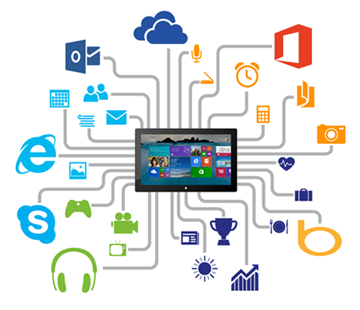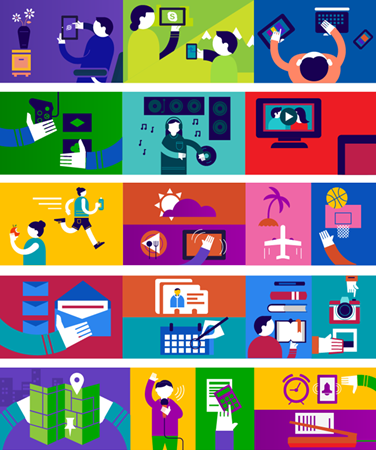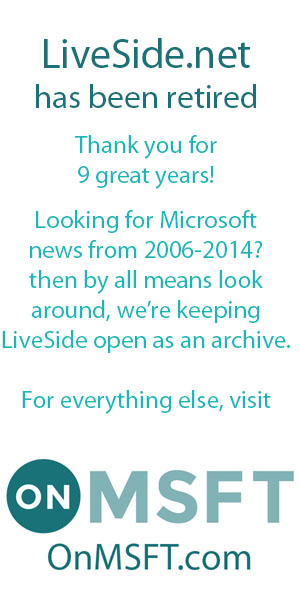Today in a blog post on the Windows Experience blog, Microsoft Apps & Services General Manager Ryan Gavin gives us the first glimpse at Microsoft’s marketing direction for its One Experience vision that Steve Ballmer laid out back in July with the announcement of the Microsoft’s latest reorg. Ostensibly written to introduce that Skype will be bundled in with Windows 8.1, the post reveals Windows 8.1’s Microsoft centric approach to apps and services: more than 20 of which will “come as part of Windows 8.1”:

The post also introduces what appear to be new marketing graphics to go along with the One Experience theme, marked in the post as “final design 8-15-2013”. Along with the Windows 8 style logos and a description of each of the services, from Outlook.com and SkyDrive to the Bing apps to Xbox Music and games to Mail and Calendar to a catch-all final category for Maps, Alarms, etc., each group has been anointed with its own little graphic representation:

While we’re not sold entirely on the new graphics, we’re encouraged by this concept that rather than a hodge podge of apps coming from Bing or Xbox or what used to be Windows Live, that instead Microsoft is starting to think about their apps as all under a single umbrella – indeed, “One Experience”.
This comes with the news that Google has yet again blocked Microsoft’s attempts to get YouTube on to Windows Phone, calling for Microsoft to “ma(k)e the browser upgrades necessary to enable a fully-featured YouTube experience”, and still maintaining that even though Microsoft and Google have said that they’re working together on a revised app, that the new app still violates YouTube’s Terms of Service.
While Microsoft is to be commended for consolidating its disparate apps into a single set of experiences (or at least to market them that way), it still has a long way to go to integrate services from other companies and platforms so that Microsoft users aren’t left out in the cold. The YouTube example has all the earmarks of someone trying to knock together a YouTube app in their spare time, with limited resources and a less than full commitment to the project. Microsoft is going to have to not only get all its own apps and services in line, but put its full resources into getting popular 3rd party services, from music and games to Gmail and YouTube to Twitter and Instagram, to the next big service to come down the road, all easily and quickly integrated into the Windows ecosystem.

